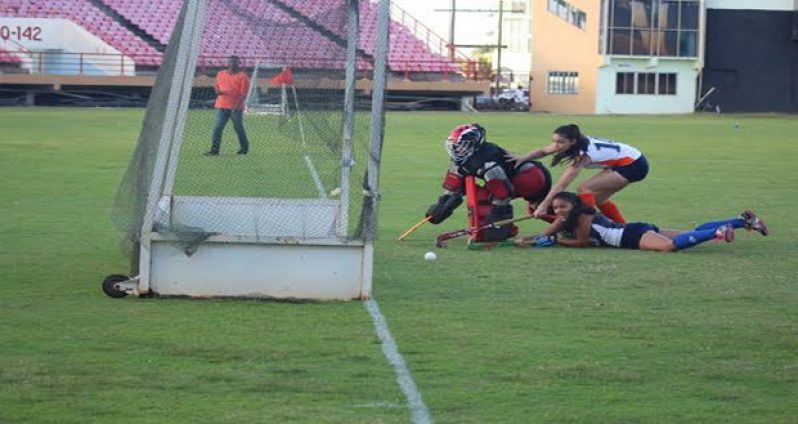By Stephan Sookram
WITH more and more youths getting involved in the sport of hockey, the drive to acquire and develop a home for the game has intensified, with cooperation coming from the government according to president Philip Fernandes. Fernandes, who will resume as head of the local body, should no one else put his hand up at the annual general meeting later this month, contended that it is critical for the sport locally to have a home.
“It is very critical for hockey, for us to have a hockey home where we can develop a proper international playing surface.

Right now Guyana is at a huge disadvantage because “we are the only regional nation who compete internationally that don’t have an artificial pitch on which hockey can be played,” said Fernandes.
Fernandes, himself a veteran player, stressed that training is greatly affected because of the lack of a facility and no outdoor international hockey can be played in Guyana to showcase the game.
According to the board, while dressing rooms and other added facilities are on its overall plan, they are simply asking for the field and a set of bleachers where fans can witness the game, something simple enough to ensure that the sport grows.
He continued, “If we had that bare minimum facility, our training could increase tremendously; our players would be able to learn techniques and tactics in one month when it would normally take them three to four months on normal grass; so it would make a significant difference to us in terms of preparation.”
The board is in talks with the National Sport Commission through its director, Christopher Jones, over a possible home for the sport, adding, “We have discussed a few options with him and right now, the ball is in his court to come back to us to see whether any of them has turned out to be viable. We are very excited by that.”
A fully sand-based facility, the most economical of the three, currently used on the world market, would cost the body a hefty sum, something that will not however deter the board’s pursuit.
“If we’re looking for US$120 000, because that’s the ballpark figure for what I see this kind of facility costing, it’s difficult to go to an international body or institution and say, ‘We have zero dollars and we need your input. It’s one of those situations where we feel confident that we can get assistance,” said the GHB boss.
He continued, “We’ve had verbal assurance from the international federations that they will assist in some financial way although they never usually cover the cost of the facility in any country; so we’re hoping that we can secure the land, which can take us one step closer to being able to approach the international federation.”
Fernandes noted that should the international bodies contribute a third or half the cost, then the GHB would lobby the private sector offering advertising and sponsorship opportunities as well as the government for the remaining funds.
A traditional field hockey size is 91.4 by 55.0 metres (100yards x 60 yards) with an area of 5 027 sq. metres (1.24 acres). There are run-off areas of five and three metres to the side and behind respectively.
We are the only regional nation that compete internationally who don’t have an artificial pitch on which hockey can be played – Philip Fernandes, GHB President
It is very critical for hockey for us to have a hockey home where we can develop a proper international playing surface – Philip Fernandes, GHB president




.png)









